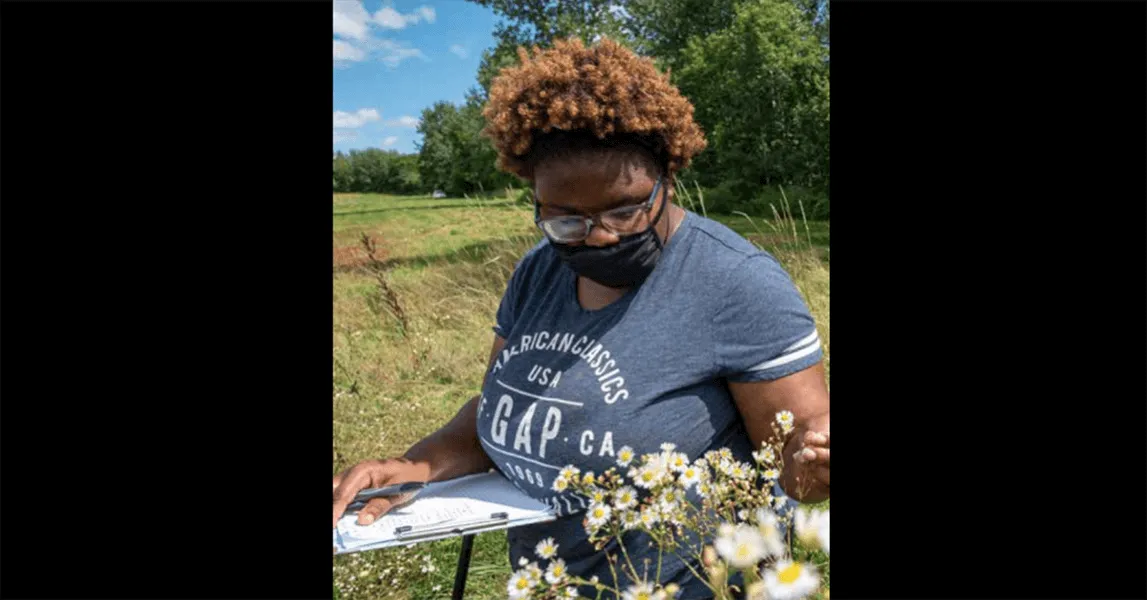Jessica Cole was intrigued.
Cole, then an undergrad at the University of Mississippi, saw a trailer for a documentary about bees and the role they play in sustaining life on earth. She’d never thought much about the realm of pollinators and their decline, but that changed when a biology professor invited her to join his lab.
The experience led her to pursue graduate school at UVM, where since 2019 she has worked in the Department of Biology researching how and why pollinators like bees are declining in population.
The principal question of Cole’s research is whether certain types of flowers and plants that grow on agricultural land are sources of pesticide exposure for pollinators. If plants do expose pollinators to pesticides, she wants to know which do the most harm and how those pollinators are affected when they come to forage on these flowers.
“I have identified some of the most common plant species that grow in agricultural lands, landscapes, and that's like red clover, yellow wood sorrel … just a lot of wildflower species,” Cole said. “And additionally, I've also found that pesticides linger months after their initial application.”
Pesticide remnants and pesticide drift are the cause of pollinator population endangerment. What these two things mean is that pollinators are in danger when they visit certain agricultural lands to forage due to the hindered degrading of pesticides in that particular plot of land or the drifting of pesticides to land untouched by the pesticide initially. That drifting can happen because of wind, underground water currents and more.
When pollinators go to forage on those wildflowers, they take pesticides into their systems. Similar to how plants can absorb heavy metals or nutrients from the soil and store them in their cell walls, plants take pesticides up through their roots and store them in their pollen and nectar.
“If there's pesticides in that nectar, what it actually does is act on their central nervous system, and it essentially causes excess excitation,” said Cole, adding, “It causes their CNS to go haywire and they can become instantaneously paralyzed. It decreases their foraging efficiency so they can't fly as long or as hard before it messes with their homing efficiency.”
Some of those bees never make it back to their hives, and they never mature into adults.
“They just kind of have stunted growth and die,” Cole said. “And then some of them do turn into adult bees, but they're not as big as they should be.”
So, the goal of Cole's research is to identify flowers that can expose bees the most to pesticides, then give this information to the public. If the public were to know which flowers are more or less dangerous for pollinators, then people could take action and rid their gardens of these harmful plants, Cole said, and replace them with plants that don’t have lethal effects on pollinators.
Her research, among that of others, could push folks to lend a helping hand in hope of saving the decreasing pollinator population.
